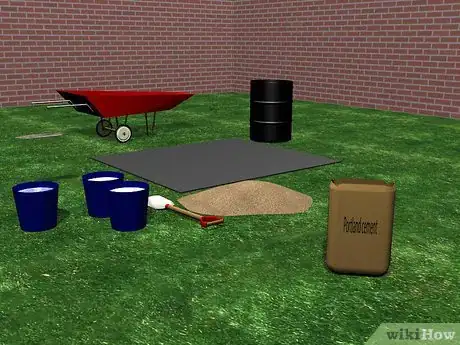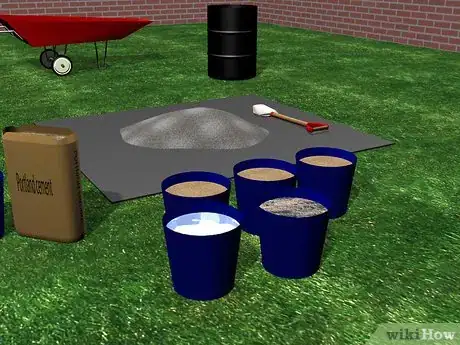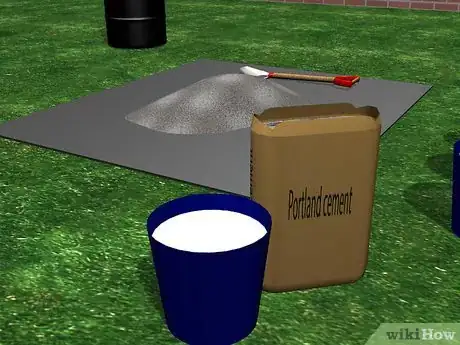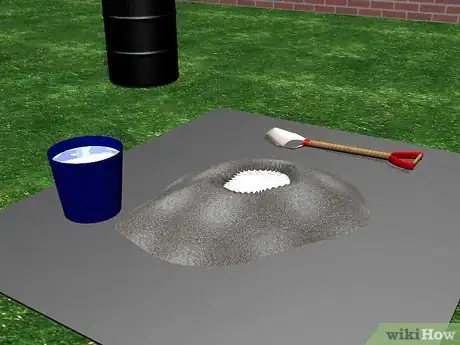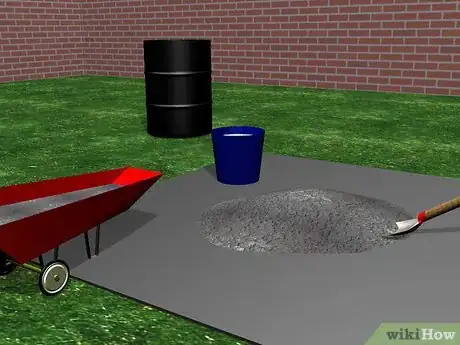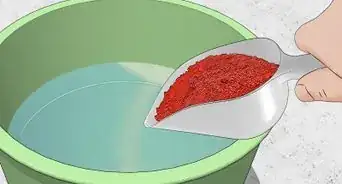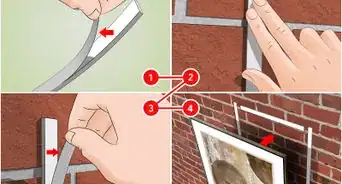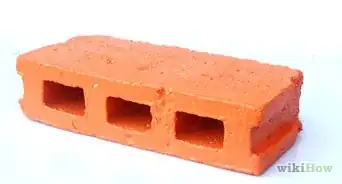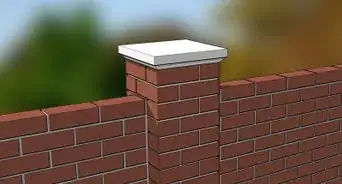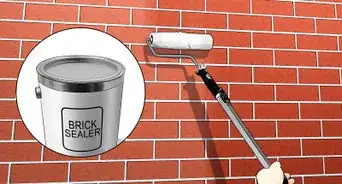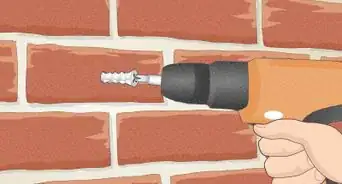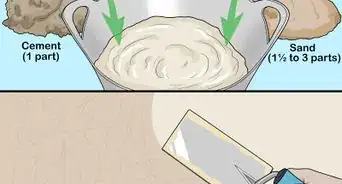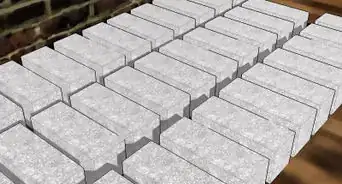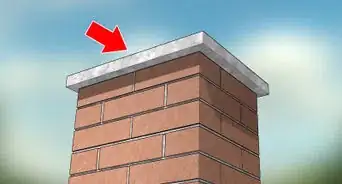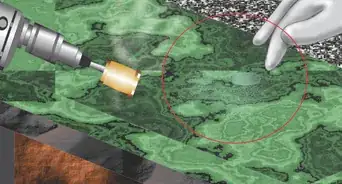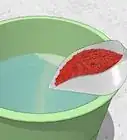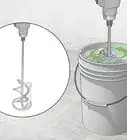This article was co-authored by Ryaan Tuttle. Ryaan Tuttle is a Home Improvement Specialist and the CEO of Best Handyman, Inc. in Boston, Massachusetts. With over 17 years of experience, he specializes in building home service businesses, focusing on creating scalable and efficient brands. With the help of his global team, the companies have achieved over 10+ million in sales and received recognition through magazine features, and enjoy partnerships with wikiHow and Jobber field service software. Boston Magazine and LocalBest.com have named Best Handyman Boston the Best Handyman in Boston. Ryaan holds Construction Supervisor and Home Improvement Contractor Licenses.
wikiHow marks an article as reader-approved once it receives enough positive feedback. In this case, several readers have written to tell us that this article was helpful to them, earning it our reader-approved status.
This article has been viewed 220,167 times.
Portland cement mortar, simply known as cement mortar, is a mixture of Portland cement, sand, and water (plus additives, if any). It is the most common mixture used today for making mortar, a workable paste that is used to set blocks and bricks. Cement mortar must be mixed just before use so that it does not cure prematurely. For this reason, it is beneficial to learn how to mix Portland mortar yourself. The process is fairly straightforward and requires only a few tools and supplies.
Steps
-
1Purchase the materials that you will need. Portland cement is a dry powder and can be purchased at most hardware stores and building supply stores. The water can come straight from your spigot at home. When buying sand, make sure to buy sand with angular (rather than smooth) grains. Masonry sand is ideal, and can be purchased from most building supply stores. Additives are available at most home improvement centers and building supply stores. Make sure to read the directions on the package and purchase the appropriate amount for your job. If you want to augment your mix with lime, make sure to buy hydrated lime (also a dry powder). The ratio of sand to cement is about 3:1 by volume.[1]
-
2Mix the dry ingredients. Using a shovel, smaller bucket or scoop, put three parts sand and one part cement into a mixing tub or trough, wheelbarrow, cement mixer or a 5-gallon (19 L) bucket. Add any dry additives according to the directions on the package and stir the powdered mixture thoroughly.[2]
- All manufacturers have different setting and mixing instructions, so it's important to always follow the instructions on the bag.
- Make sure not to make more than you can use in about two hours, as the mortar will set quickly.
- Adding lime to the mortar will improve its workability, make the mortar more water resistant, and will reduce the amount of shrinkage upon curing. Lime also helps prevent the cement and sand from separating.
- If you want to add lime to your mortar, replace about ten percent of the Portland cement with hydrated lime.
Advertisement -
3Add water to the dry ingredients. Once you have mixed the dry ingredients thoroughly, add water a little bit at a time. Add a small amount of water, then distribute the water by carefully mixing with a spade or other tool. Keep adding water until the mortar reaches the proper consistency. It should be smooth and spreadable, but should not drip or run off your spade when you lift it. If you add too much water, you can adjust by adding more cement and sand.[3]
- Most mortar should have the consistency of peanut butter.
- Once you have mixed the mortar, add any liquid additives and distribute them evenly through additional stirring.
- Clean your mixing tools at this time so that the mortar does not cure on the tool.
- Run clear water over the tool and rub with your gloved hand until all the mortar is removed.
-
4Use the cement mortar. Apply the mortar within about two hours of mixing it. If you wait longer than that, it will likely have cured too much to use, but the curing time can be extended by adding retarders and by keeping the mortar cool or cold. Once the mortar begins to set and harden, do not attempt to thin the mix by adding more water.[4]
-
5Clean the tools. Run clear water over the tool and rub with your gloved hand until all the mortar is removed. If the mortar has set on the tools, beat the the tools to break off the dried mortar, then rinse while scrubbing.[5]
Community Q&A
-
QuestionHow can I make a mortar that is grey in color?
 Community AnswerIt depends on the type of surface and its purpose. One possibility is to mix white cement and regular cement. Note, however, that the white cement does cure more quickly as it is designed to be used for instance to place tiles. If it is for finishing a wall or floor, you can also look for polished cement or micro cement.
Community AnswerIt depends on the type of surface and its purpose. One possibility is to mix white cement and regular cement. Note, however, that the white cement does cure more quickly as it is designed to be used for instance to place tiles. If it is for finishing a wall or floor, you can also look for polished cement or micro cement. -
QuestionI'm pointing an outside wall that is load bearing with stone. What mix ratio should I use for pointing?
 Community AnswerFor pointing, a 3:1 sand to cement mix should be fine. I don't expect pointing will significantly impact the load bearing aspects of the wall.
Community AnswerFor pointing, a 3:1 sand to cement mix should be fine. I don't expect pointing will significantly impact the load bearing aspects of the wall. -
QuestionWhy are additives required? Is it necessary to add additives to cement and sand?
 Community AnswerAdditives aren’t necessarily needed unless you have special requirements, e.g. you want to accelerate or decelerate the setting/curing period. The setting rate is temperature dependent; for example, in hot weather, you may want to add an additive to slow down the setting rate, whereas in cold weather, you may want to speed up the setting rate. You also can add pigments to the mortar mix if you want a custom color.
Community AnswerAdditives aren’t necessarily needed unless you have special requirements, e.g. you want to accelerate or decelerate the setting/curing period. The setting rate is temperature dependent; for example, in hot weather, you may want to add an additive to slow down the setting rate, whereas in cold weather, you may want to speed up the setting rate. You also can add pigments to the mortar mix if you want a custom color.
Warnings
- Wear a dust mask when handling Portland cement or hydrated lime. Both are respiratory irritants.⧼thumbs_response⧽
- Wear heavy gloves and safety glasses when working with Portland cement or lime, as both can dehydrate and/or irritate the skin and eyes.⧼thumbs_response⧽
Things You'll Need
- Portland cement
- Masonry sand
- Hydrated lime (optional)
- Water
- Additives-- wet or dry (optional)
- Measuring bucket, scoop or shovel
- Mixing container: tub, trough, cement mixer, wheelbarrow or bucket
- Spade
- Heavy gloves
- Safety glasses
References
- ↑ https://www.everything-about-concrete.com/concrete-mixing-ratios.html
- ↑ https://images.homedepot-static.com/catalog/pdfImages/2c/2cd086ef-e650-44c8-a0d1-f5fc3ce4418b.pdf
- ↑ https://www.youtube.com/watch?v=KNb0IbYrK8E
- ↑ https://careertrend.com/how-to-add-calcium-to-a-concrete-mix-13641640.html
- ↑ https://www.youtube.com/watch?v=qGm0k6fC6Ao
- http://www.davesdiytips.com/2009/02/mixing-concrete-or-mortar-by-hand/
